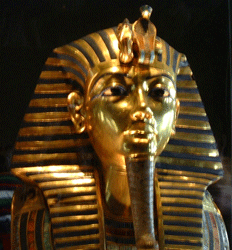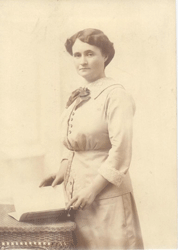How we Study the History of South Africa and the World?
This article by Shirley Erwee focuses on how their family studies not only the history of South Africa, but world history too. It was published in a South African Homeschooling Magazine, The Learning Home, June 2006.
You may also want to read Why Study the History of South Africa?
Making Dead Guys Come Alive
How do we study History?

I suspect that the reason for this topic stems from the fact that so many of our generation (the parents of homeschooled children) hated history at school. I remember it requiring lots of what we called parrot-fashion learning – where we were required to memorise endless facts and dates so that we could ‘regurgitate’ them correctly on our exam papers.
What do I remember of History?
For most of primary school I remember learning facts about the history of South Africa over and over – the Trekboer movement, the Great Trek and the clashes with the Zulu etc. In Std 5 I had to do a project on an ancient civilisations and with my mother’s input, I learnt a lot from that. Std 6 history I can’t recall at all. The only time history was any fun was in my std 7 year where we had a teacher who was passionate about her subject and tried to make it come alive for us. She decorated her classroom with a variety of old newspaper cartoons that had political slants to them. They were great examples of comic propoganda. When we were studying World War 2 she would often goose step into the classroom and start teaching us in a German accent! But alas, the subject matter remained pretty dry and as boring as the black and white text books from which we had to study it.
So how have I taught my children the history of South Africa and world history?
Not at all like the above. We have never studied history as an isolated subject and my children have never been required to memorise dates and facts so that they can repeat them later. Since we have always used a literature-rich unit study approach to learning everything (besides language and maths), history has always been studied in the context of whatever literature we have been studying.
When my eldest daughter studied the history of South Africa, using the unit study programme I co-authored, Footprints On Our Land, I wanted her to have a good sense of the sequence of historical events that occurred during the time frame on which we were focusing.
To do this, we set up a vertical timeline using a fax roll down the side of a door in our school area. On this she recorded the important dates in the history of South Africa, brief facts and pasted picture discs relating to the historical but fictional stories she was reading.
From that the whole family soon learned that Dias arrived in 1488 and later, my then 3-year old son recognised a large photo of Van Riebeeck when we visited Kleinplasie Museum complex in Worcester!
Besides this, I required her to do regular narrations on historical topics. (Narration is simply the process whereby a child tells back what she has learnt from herr eading.) At first, I would ask her a leading question and then play scribe for her and record what she narrated orally. As she became more familiar with this process, I required her to do written narrations. I’d say something like: “Write down what you have learnt about Simon van der Stel” or “Explain the uses of the Voortrekkers’ wagons” “What did you learn from your reading about the lifestyle of the Zulu people?” etc.
These were recorded in her history narration book. For this we used a nature study book, so that she could also do a picture for each narration. She now has a meaningful record of her study of the history of South African history. (We have since incorporated a combined narration and timeline book into the Footprints On Our Land programme.)
Since then, I have been using two Sonlight Cores
per year with my two age groups of school-aged learners. I have not been as diligent with narrations as I would like to be, often they are just oral. However, with the great literature that we are reading, history is no dull subject that we have to get through – it is the CORE of everything we study.
The beauty of literature-rich studies is that, instead of reading snippets of information about characters in history, your children get to experience the lifestyle and events of that era through the eyes of the characters in the stories. A story with a hero, a plot and a climax grips kids and draws them into History, without them associating it with ‘boring old facts’. Well-chosen reference books to accompany the reading of historical fiction helps to place it in context.

This year we have been studying ancient history beginning with the Egyptian civilisation which has fascinated us all. We haven’t done elaborate projects or anything fancy, yet we have found our literary journey back through time most interesting. Tutankhamen, being a boy king and having his treasure in tact when his mummy was found is ‘exciting stuff’ for children to read about, especially if it is presented by means of good literature! Glitter glue was put to good use for some dazzling picture narrations after the children learned about him!
As we progress, my young ones are diligently pasting the timeline characters that Sonlight provides into the timeline book and are starting to get an idea of events in history that happened in the same eras. Last year we read a comprehensive children’s Bible from cover to cover and plotted the main Bible characters in the timeline book. This has given them some points of reference, with the B.C. / A.D. division being the most significant point of all. I believe that in the next few years, as we keep referring back to this tool and adding more to it, that it will become more and more meaningful to them.

We also have had some great impromptu conversational history lessons…and these are probably the best kind, as they are so relevant to the child at that moment. They have happened when the children ask specific questions about Bible times or times gone by like ‘when Granny and Grandpa were young’ and ‘when Mom and Dad were little’ or about changing technology!
We have also done a little digging and investigating into our own family history and discovered that one ancestor was an employee of the Dutch East India Company!
We created a family tree, which although incomplete went back seven generations. The Young family discovered that they are descendents of one of the characters in a story of a Huguenot family which is included in the study of the history of South Africa in Footprints On Our Land – South Africa’s Heritage programme.
The following are some historic sites or museums that we have visited and enjoyed to enrich our knowledge of the history of South Africa:
- The Cape Town Castle
- The SA Museum, Cape Town
- Whale Museum at Hermanus
- Bartholomeu Dias Museum Complex at Mossel Bay
- Genadendal Museum Complex
- Kleinplasie at Worcester
- Toy Museum at Stellenbosch
- Dias Cross at Boknesstrand / CannonRocks
- San (Bushman) Caves at the Cederberg
- The ObservatoryMuseum at Grahamstown
I have found that it is best to let these visits be paced by the children’s interest.
While my husband was abroad in Beijing, China last year, we did virtual tours of the palace, museums and temple that he told us he had visited. When he returned and showed us his photos, we could appreciate them! This year we have done some virtual touring in Egypt too. We should do more of that!
We have also used audio stories about the lives of historical characters and watched a few historical movies, (eg. Jock of the Bushveld, Anna and the King, Cry the Beloved Country) to enhance our history learning experiences.
I think the history of South Africa and the world is one subject that they didn’t teach better, “back in the good ol’ days”.
To sum up, I’ve described 6 alternatives to make the history of South Africa and the world more interesting:
1. literary journeys using historical fiction
2. conversational history lessons
3. research family history
4. visits to historic sites andmuseums
5. virtual tours on the Internet
6. historical movies
Why use boring old text books to study the history of South Africa when we can make learning about dead guys come alive using the ‘living books’, multi-colour resources and real places instead?
Back to Homeschooling Articles
